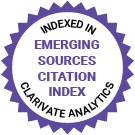Recent Articles

The rising demand for advanced home care services, driven by an aging population and the preference for aging in place, presents both challenges and opportunities. While advanced home care can improve cost-effectiveness and patient outcomes, gaps remain in understanding how eHealth technologies can optimize these services. eHealth tools have the potential to offer personalized, coordinated care that increases patient engagement. However, research exploring health care professionals’ (HCPs) perspectives on the use of eHealth tools in advanced home care and their impact on the HCP-patient relationship is limited.

During the COVID-19 pandemic, in-person visitation from family members was extremely restricted and sometimes eliminated to reduce the risk of transmission of SARS-COV2 within hospitals. During this time, many healthcare professionals created novel strategies that they deployed rapidly to maintain a patient-centered and family-centered care approach. While pandemic-related restrictions have eased, these systems, including video-conferencing or virtual bedside visits, remain relevant for family members who cannot be physically present due to other reasons (lack of access to transport, socio-economic restraints, geographical distance).

Digital health competence is increasingly recognized as a core competence for healthcare professionals. A comprehensive evaluation of knowledge, skills, performance, values, and attitudes necessary to adapt to evolving digital health technologies is essential. The DigiHealthCom is a well-established instrument designed to assess digital health competence across diverse healthcare professionals.

In response to the COVID-19 pandemic, the United States extended regulatory flexibilities to make telemedicine more accessible to providers and patients. Some of these flexibilities allowed providers to intake patients over telemedicine and prescribe certain scheduled medications without an in-person visit.

Health professionals face significant psychological burdens including burnout, anxiety, and depression. These can negatively impact their well-being and patient care. Traditional psychological health interventions often encounter limitations such as a lack of accessibility and privacy. Artificial intelligence (AI) chatbots are being explored as potential solutions to these challenges, offering available and immediate support. Therefore, it is necessary to systematically evaluate the characteristics and effectiveness of AI chatbots designed specifically for health professionals.

Technology can be an effective tool for providing health services and disease self-management, especially in diabetes care. Technology tools for disease self-management include health-related applications in computers, smartphones, and robots. To provide a more effective continuity of care and to better understand and facilitate disease management in middle-aged and older adult diabetic patients, robots can be used to improve the quality of care and supplement community health resources, such as community pharmacies.

Chronic kidney disease (CKD) is a common condition worldwide and home dialysis (HD) provides economic, quality of life, and clinical advantages compared to other dialysis modalities. Human-centered design aims to support the development of eHealth solutions with high usability and user experience. However, research on the eHealth needs of patients using HD is scarce.

Language acquisition is a critical developmental milestone, with notable variability during the first 4 years of life. Developmental language disorder (DLD) often overlaps with other neurodevelopmental disorders or simple language delay (SLD), making early detection challenging, especially for primary caregivers.

Wearable transdermal alcohol sensor (TAS) devices generate continuous data on alcohol consumption through the indiscernible sweat vapors on the skin. This continuous alcohol monitoring capability could provide a new method for alcohol services to monitor service users at various stages of their alcohol treatment.


The Dutch acute healthcare system faces challenges with limited resources and increasing patient numbers. To reduce outpatient follow-up, Direct Discharge (DD) has been implemented in over thirty out of 80 Dutch hospitals. With DD, no routine follow-up appointments are scheduled after the Emergency Department (ED) visit for low-complex, isolated, stable musculoskeletal injuries. This policy is supported by information leaflets, a smartphone application, and a telephone helpline with human support. Growing evidence shows that DD is satisfactory, safe, and effective in reducing secondary healthcare utilization, but thorough patient experiences are lacking.














